The archaeological area and Patriarchal Basilica of Aquileia became UNESCO World Heritage sites in 1998. It is because of their historical, archaeological, cultural and anthropologic importance.
The World Heritage Site includes all elements that contribute to explain their excellent universal value, summarized into three criteria governing entry:
Aquileia was one of the most important and wealthy cities of the Roman Empire;It is the most completed example of the city of ancient Rome in the Mediterranean area because most of it is still intact and buried;The Patriarchal Basilica of Aquileia proves its crucial role in Christianism's spread in Europe during the Early Middle Ages.
Aquileia's origins: one of the most important cities of the Roman Empire
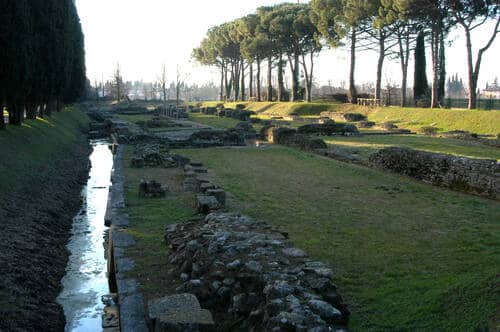
Aquileia had an extremaily important past. The Romans founded the city in 181 BC. Firstly, it developed as a military city, with an army of 3500 soldiers.
The forum had a rectangular plant, which extended following the same urbanistic development. The city had a port that, during the centuries, developed its commercial power.
It was a river port, although the city arrives still today at sea. The development of the commercial trades along the river makes the city more significant and more critical. In the I century AC, it counts about 180thousand of inhabits, becoming the fourth most important city of the Roman Empire in Italy, after Rome, Milan and Capua.
Unfortunately, after the city held many barbarian incursions, it couldn't survive Attila and Huns' attacks in half of the V century. They completely levelled the city, and the only thing that survived was the Basilica. The church will stay the symbol of the Christianity of the area and Aquileia forever.
The birth of the Patriarchal Basilica of Aquileia
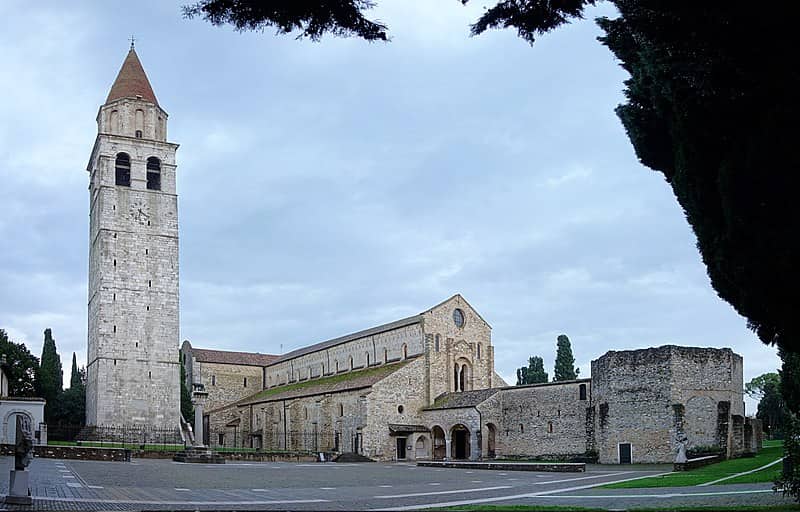
Patriarchal Basilica in Aquileia sees the light in 314 AC, after the Milan Edict, issued by Emperor Constantine to stop the religious persecution.
To strongly want the church was the bishop Teodoro, for a precise aim: making the church a house of worship and a proper catechism, teaching the Christian religion. Indeed, in the initial project, the basilica had two rooms: one on the South used to guide the Christian faith and another on the North, used for the religious ceremonies. There was a corridor to link the two rooms that worked as a junction room, where it was possible to admire the immense mosaic floor. Bishop Teodoro's idea was that entering inside that room build-up a kind of path of faith, which would lead the catechumens to the dedication and knowledge of Christian religion.
Today, the basilica hasn't more this shape. It will be destroyed and rebuilt four times during the centuries, changing its architectural framework and stacking the new buildings on the old ones.
The majolica floor of Basilica of Aquileia
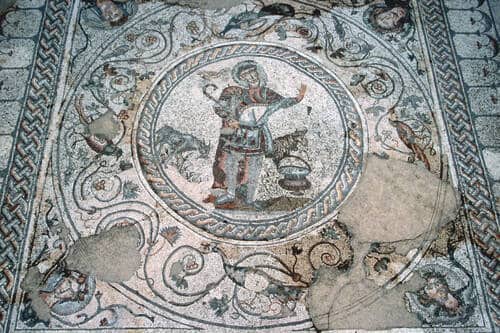
The Patriarchal Basilica's floor in Aquileia is a beautiful mosaic made in the IV century and unearthed by archaeologists in 1909. With its 700 sqm, it is the most extended mosaic floor in the entire Latin Western.
On the floor, there is a sequence of symbolic figures and allegoric scenes. Among these images, the Story of Giona and the Whale. A sea of 153 fishes, all different: they represent the 153 countries known at the time, so describe the world in the mosaic.
Worth mentioning The Good Shepherd scene too. It has on its hand a pan flute, which attracts different animals. It is a symbol of the many people of varying tongue and culture that decided to follow the God's word.
Basilica of Aquileia's apse
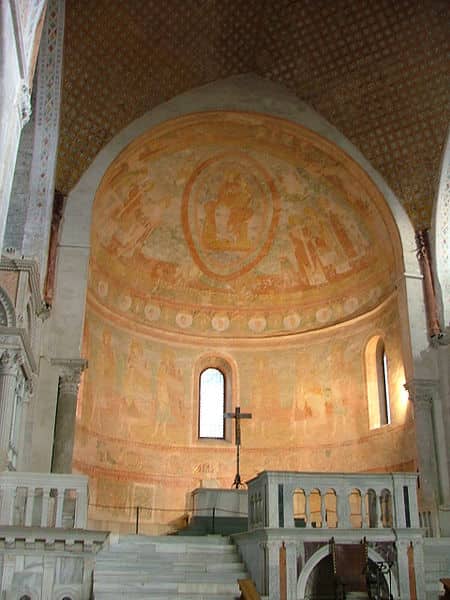
On the Patriarchal Basilica's apse, there is a majestic fresco made in 1031. Patriarch Poppone, who expressly asked to represent the Virgin Mary and Child on the Throne, dedicated the basilica to Aquileia and declared that the city was the Mather of the true Patriarchate.
On the fresco, the Madonna was surrounded by the saints considered symbols of the local Christian faith: St. Mark the Evangelist and the Saint Martyrs Fortunato and Ermacora.
The frescos crypt of the Aquileia's Basilica
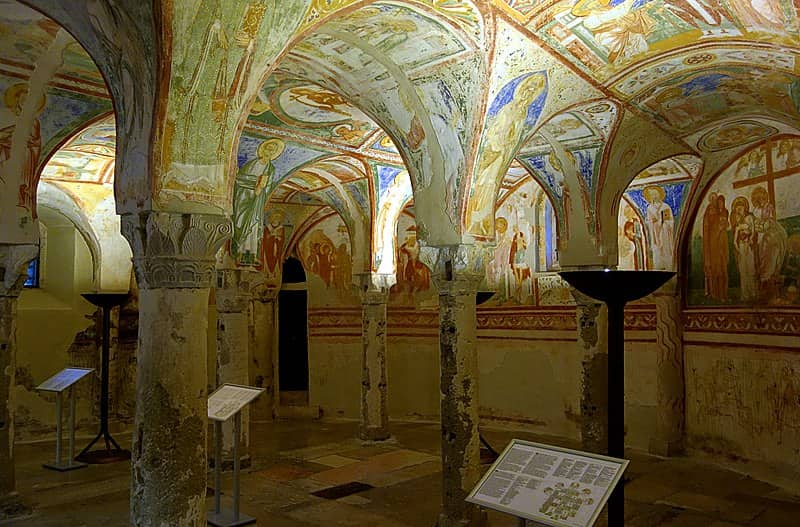
We find the apse's saints again inside the frescos crypt. The architectural building is from the IX century, while the frescos are from the XII century. It represents 19 scenarios that tell the origins of Christianism in Aquileia, the Saints Ermacora and Fortunato's life.
We can see the moment when St. Mark, sent by St. Peter, arrives in Aquileia to evangelise the city. He will be particularly impressed by the strong faith of Ermagora, so much that he decided to bring him to Rome and get ordinated bishop. When Ermagora went back to Aquileia as bishop, he nominated Fortunato as his deacon and together, they will go on to evangelise the city and the surroundings. Obviously, their story will have a tragic epilogue, ending with their martyrdom.
The Saint Sepulchre and the crypt of the ruins
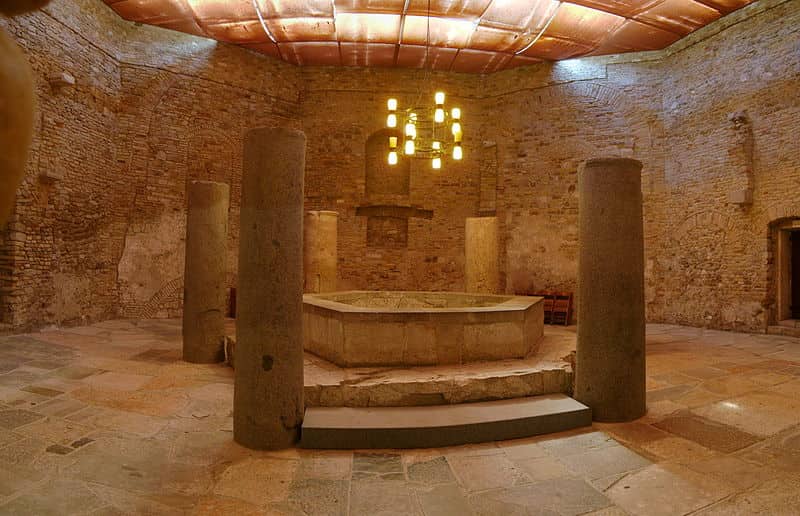
Before going out from the Aquileia's Basilica, we find the Saint Sepulchre, made in the XI century, a copy of Christ's sepulchre, preserved in Anástasis church in Jerusalem.
From this, you can also enter into the crypt of the ruins: the underground archaeological area that surrounds the bell tower. Here, you can see archaeological ruins of four different periods, while on the lower level are preserved mosaics from a Roman house of the V century BC.
Baptistery and Belltower
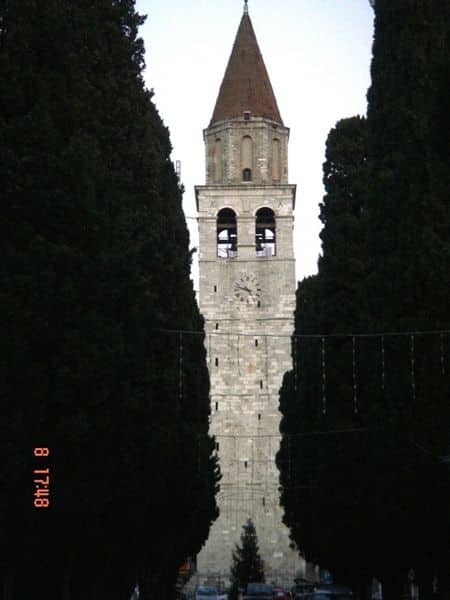
To complete the Patriarchal Basilica is the building on the opposite of its entry: that is the baptistery. It has on the centre a christening font in hexagonal shape, with on the sides six columns that used to support a cover that does not exist anymore.
In the end, the belltower stands up to ten meters to the basilica. Made in the first half of the XI century for Patriarch Poppone's want and raised ulteriorly in the XIV century, reaching the current 73 meters.
About the author
Written on 10/09/2021


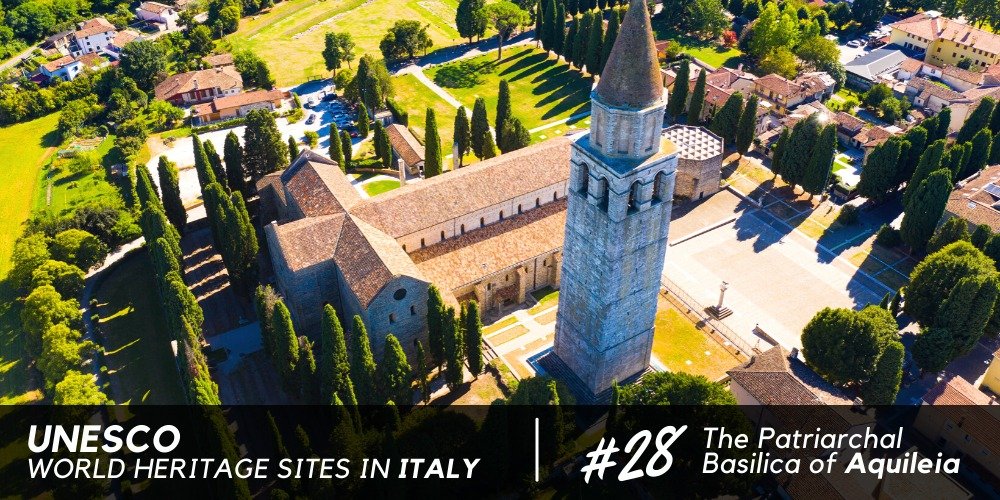
Ludovica Poliero
Aquileia is a small city in Friuli-Venezia Giulia that rises on the Natisone river. In 1998, it entered in UNESCO World Heritage List, thanks to its vast and extensive archaeological area and its Patriarchal Basilica. They both represent one proof of ancient Roman city, and the other is the cradle of Christianity in Central Europe.